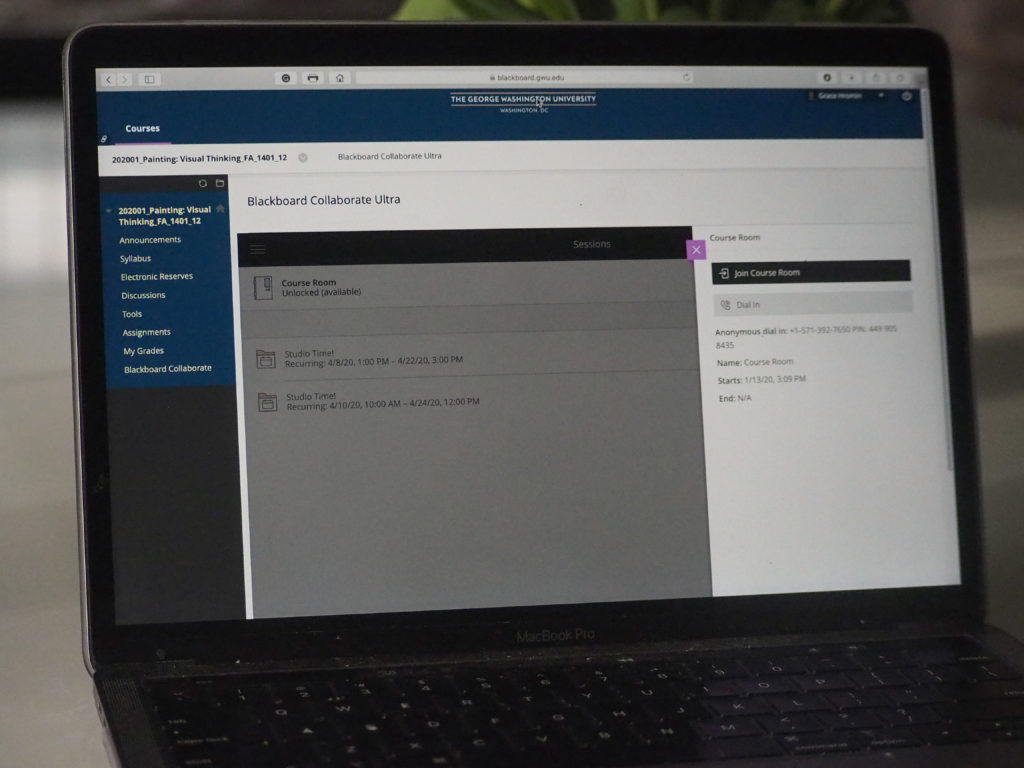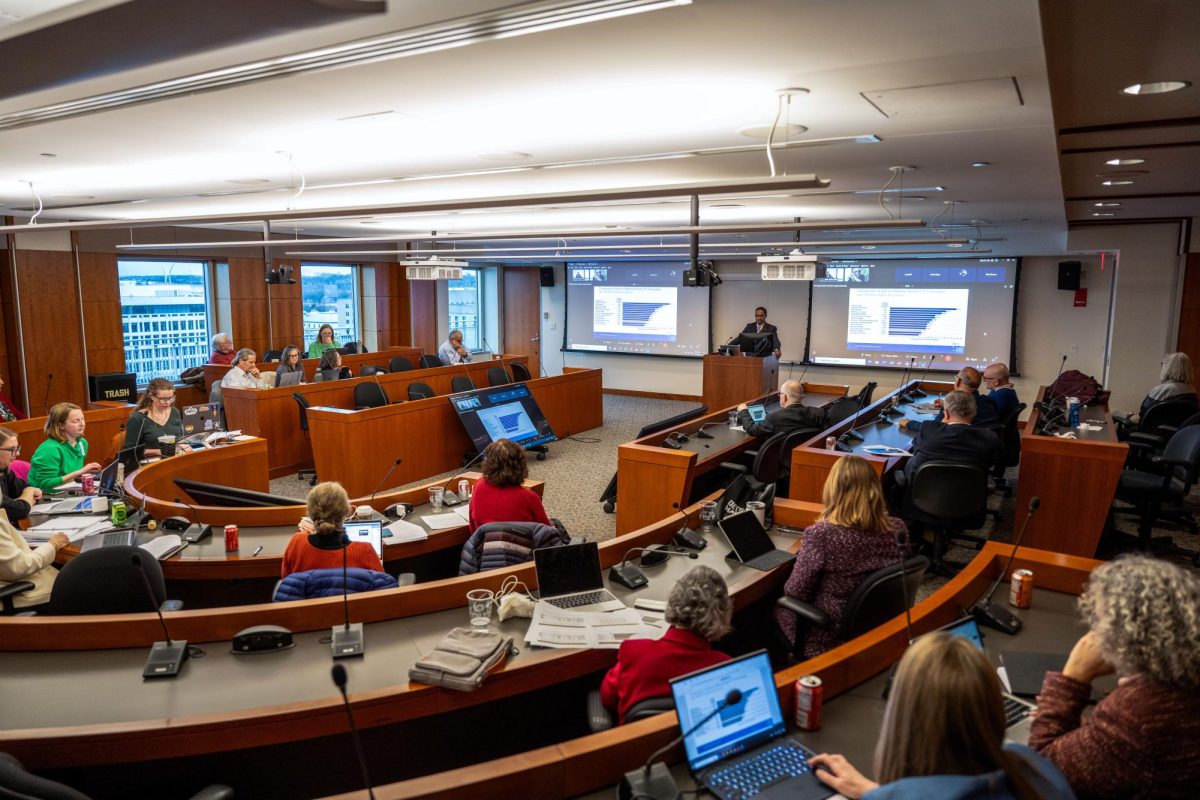As faculty prepare to teach their third week of classes online, they said the virtual format has forced them to adapt their teaching methods to ensure students learn something from their courses.
Before the instructional continuity period began, faculty said they were hopeful they could maintain a sense of normalcy in online classes with support from officials. Now, more than 10 professors said they have successfully moved their course online but expressed concerns about whether students will retain information from lectures delivered in a less personal setting.
James Bailey, a professor of management, said he has been able to replicate much of the in-class experience using Blackboard Collaborate features that allow students to communicate over group chat, view content posted on Blackboard and allow him to explain concepts by drawing with the virtual whiteboard tool.
“The students are doing the same thing they would in the classroom, they just have to do it a different way,” he said.
Bailey, who teaches a course on organizations and human capital for the master’s of business administration degree in health care, said more students have participated and engaged in discussion in his class after administrators moved classes online because health care has become an increasingly relevant topic given the ongoing pandemic.
“I’m fortunate because the classes I teach are particularly relevant to what people are living with right now,” he said. “I think it actually piques interest and drives more participation.”
Peter Nassar, an adjunct professor of geology, said virtual classes are an imperfect substitute for in-person ones because he is “confined” to the limitations of technology and circumstances where students are unable to leave their home to study geology in the field.
“Now even just for very simple things it can be rather challenging, and it takes really many days of tinkering to get it right,” he said.
Nassar said the resources officials have provided, like online training sessions and workshops, have been useful in the transition, and he has relied heavily on Division of Information Technology staff to provide assistance with technical difficulties with Blackboard Collaborate.
“IT has been very helpful in terms of fixing problems that come up either right in the middle of class or as I’m trying to work through other technical issues,” he said. “Every time I’ve called, pretty much I get something right away.”
Antonio McAfee, a part-time faculty of black and white photography, said his class is using a phone app to simulate the process of developing film in a darkroom to allow students to practice the skills they learned in class digitally.
“For this film class, the technological shift wasn’t that bad,” he said. “Because we’re just doing what’s convenient, which is on the phone using the app – everyone has access to that.”
McAfee said he made some changes to the class’s syllabus, including altering the grading scale and substituting tangible assignments, like producing prints, with digital equivalents.
“All the concepts are the same, except it’s just replacing the photographic component of it – that’s the most obvious and most dramatic shift,” McAfee said. “Nothing can replace being in the darkroom and shooting with film, but we’re doing our best.”
Sam Ashworth, an adjunct professor of English, said he decided to hold his creative writing class on Saturdays for two and a half hours at a time rather than twice a week for an hour and 15 minutes each to accommodate students in different time zones.
He said he prefers this format over an “asynchronous” one – where lectures are recorded in advance and posted for students to listen to on their own time – because the format is more interactive and allows for discussion and immediate feedback.
“The biggest problem that I had was I teach an 8 a.m. course, which is fine when everyone is in the same place,” he said. “But now, when you teach an 8 a.m. course, a number of your students are on the West Coast, and suddenly you’re asking kids to wake up for a 5 a.m. class, which is inhumane.”
Ashworth said the online format has provided him and his students with flexibility and motivation that he hadn’t witnessed previously in class. He said his students have been participating in class more and are bringing more creativity to their assignments.
“I’m really pleased with how energetically my students have taken to various writing assignments like short bursts of writing in the class, and having longer classes on the weekends is a lot easier for me rather than trying to compress everything into a narrow space,” he said.
Maria José de la Fuente, a professor of Spanish, said her transition to online went smoothly, apart from her need to buy a new Internet cable to solve some connectivity issues at the beginning of the instructional continuity period.
But she said she is concerned about students’ well-being and mental states after she noticed some changes in their moods while students went into quarantine. She said professors should proactively support their students by communicating with them and keeping them motivated to finish the school year.
“I think it’s very important to know their specific situations even if it takes some time to check with every student in this situation,” she said.








